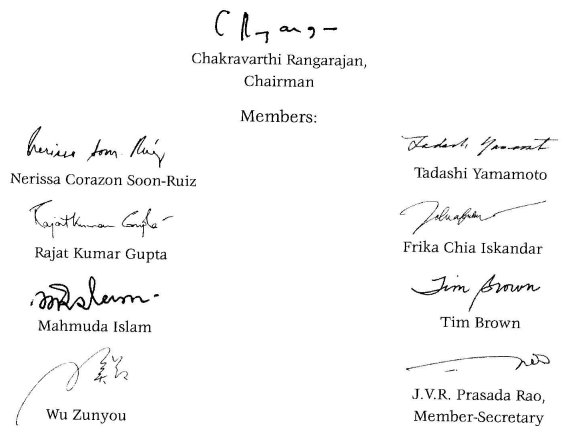Preface
| Reports - Redefining AIDS in Asia |
Drug Abuse
A few years after the first reported case of AIDS in the USA, the Human Immunodeficiency Virus (HIV) had also established itself in Asia. It spread quickly and by the early 1990s, HIV infections were being reported in every country of Asia. In some, notably Thailand, major epidemics were underway.
A little more than two decades later, an estimated 9 million people in Asia_have been infected with HIV, and millions of them have died of AIDS-related illnesses. Even these high numbers cannot convey the suffering and pain experienced by people living with HIV, and their families. Along with the shock of sudden failing health and mysterious illnesses, came public shame and humiliation. Infection did not elicit compassion but condemnation and rejection.
HIV seemed to stoke and focus deep-rooted social prejudices, not least because it was associated with behaviours deemed taboo in 'polite society': drug injecting, sex between men, and commercial sex. Consequently, the initial reactions across Asia tended to be either denial or moral panic.
In most places, the factors driving the epidemics, and the patterns and trends of HIV transmission in Asian societies, were poorly researched. This had two effects. In some quarters, it fed the complacent belief that the dominant values in Asian societies would protect them against HIV, and that epidemics would be confined to marginalized groups of people who engaged in taboo behaviours. At the same time, the burgeoning epidemics underway in East and southern Africa sparked fears of similar relentless HIV spread in Asia, and evoked doomsday scenarios in which 10 per cent or more of adults would soon be infected with HIV.
Over the past decade, our understanding of HIV epidemics in Asia has improved to the point where we can safely say that both those prognoses were wrong.
But do we know what HIV holds in store for Asia? What are the driving factors in Asia's HIV epidemics, and how may these change? What damage are the epidemics wreaking in the countries of this region? How high are prevalence rates likely to become and who will bear their brunt? What are the best strategies for overcoming the epidemics? And are those strategies viable and realistic in Asia today?
Those questions, for the most part, have eluded clear-headed enquiry and satisfactory answers. They prompted the Executive Director of the Joint UN Programme on HIV/AIDS (UNAIDS), Dr Peter Piot, to propose a comprehensive study of the realities and the impact of AIDS in Asia.
That task was entrusted to an independent Commission on AIDS in Asia, which was set up in June 2006 and assigned an 18-month mandate to study and assess the impact of AIDS in Asia, and to recommend strategies for a stronger response to HIV and AIDS. The Commission's terms of reference and its composition are provided in the annexes to this Report.
We thank UNAIDS and its two cosponsors, UNICEF and UNDP, for the initiative and interest in this work and for the financial and technical support provided to the Commission.
The complexities of the epidemic and its challenges were evident to the Commission from the outset. At its first meeting in July 2006, however, it also realized that significant gaps existed in the available information on the epidemics' advance across Asia and their impact on societies. In some respects, the research was of inadequate quality, in others it appeared to be largely absent.
The Commission therefore initiated two important research initiatives. One examined the epidemiology of Asia's HIV epidemics and sought to describe their likely future progression. The other analysed the medium-to long-term impact of AIDS on societies and economies in Asia. Almost three dozen research papers were produced.
The first project was funded with grants made to the Commission, while the second was financed by the Asian Development Bank (ADB) which harmonized its own research agenda on AIDS with that of the Commission. We thank the ADB for this valuable support.
The Commission also explored the roles played by communities that are at the centre of the epidemics. Some 600 individuals and community organizations across Asia were contacted and in-depth interviews were conducted with key activists and civil society organizers. The findings were sobering. Community participation in HIV responses was found to be limited, as was the capacity of communities to manage and sustain their work on HIV. The Commission gratefully acknowledges the contributions of civil society and community based-organizations in identifying ways in which community involvement in Asia's HIV response can be strengthened.
In addition to this research, the Commission also conducted two field missions (to Bangladesh and the Philippines), hosted an in-depth policy options workshop in Bangkok, and engaged with numerous political leaders, Government officials, AIDS practitioners, researchers, donors, United Nations, and civil society representatives from across Asia. This Report gathers the insights and findings of this 18-month exercise.
The Commission believes the Report deepens and refines the understanding of Asia's pandemic, and pinpoints the critical components of a viable and sustainable long-term response that can curb AIDS in Asia.
The Report includes key implementation strategies at both the policy and operational levels. The challenge now lies in translating these into effective action throughout the region.
During its deliberations, the Commission was often asked for whom this Report was intended. Was it for planners, or policy designers, or politicians, or opinion-makers, or activists, or the media? The answer is: all these and more.
The findings and recommendations contained in this Report are intended for people from all walks of life who care about the societies they live in and the people they share them with.
To such thinking and discerning people of Asia, we present this Report.
| < Prev | Next > |
|---|












